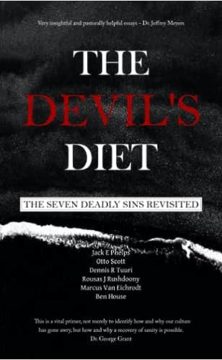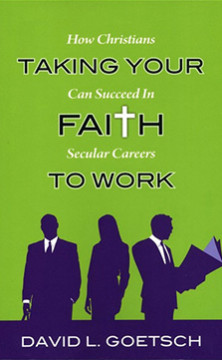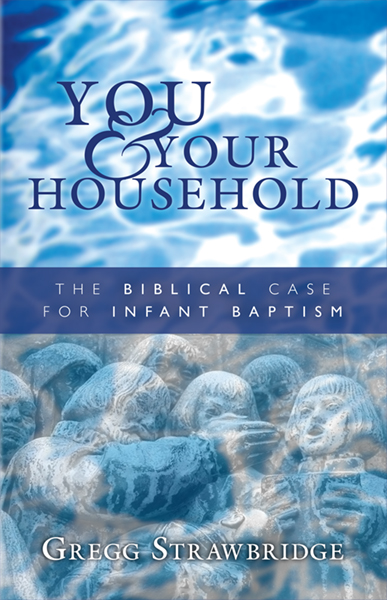Why doesn’t God complete the work of our salvation in one fell swoop? When we are baptized, when our sins are declared forgiven because we have died and risen again with Christ, why don’t we experience all that salvation will ever be? In our baptism, we are declared forgiven, but we continue to dwell in a mortal body and battle with sin and its effects until the day of our death. Then, our bodies are held in death, waiting for the final resurrection, the fullness of our salvation. Why not do it all immediately?
Salvation is progressive. We have been saved, we are being saved, and we will be saved. That is all true. In one sense, we are as forgiven and saved as we will ever be. However, in another sense, we wait for the fullness of our forgiveness and salvation to be realized in the resurrection of our bodies.
Tellingly, the family of words usually translated as “saved” or “salvation” are associated with the medical field and deal with healing. That is appropriate because our salvation is the complete healing of our entire being, body and soul. Every aspect of our humanity that has been affected by sin—and that is every aspect of our humanity—is being healed in our salvation. But our healing is progressive and waits for the fullness of our salvation to be revealed at the last day.
God has his reasons for this. He trains us through this life so that we become more mature and, thus, able to handle whatever responsibility he gives us later in his kingdom. But the fact that we don’t realize the fullness of our salvation until the end is a fact.
The way God deals with us in forgiveness as it relates to healing is instructive for the relationship between forgiveness and healing in our relationships now. The major emphasis of Lent that is crucial in our discipleship is for us to meditate on our sinfulness and plead for God’s mercy for ourselves and others. Lent is a journey with a destination. It is not a perpetual state of being. Lent gives way to Easter when God fully and finally declares the forgiveness of our sins through the resurrection of Jesus from the dead.
Jesus demonstrates the connection between forgiveness and healing when he heals the paralytic by telling him his sins are forgiven in Mark 2:1-12. Matthew says that the prophecy of Isaiah 53 is fulfilled as Jesus cast out evil spirits and healed the sick: “He himself took our infirmities and bore our sicknesses” (Isa 53:4). Jesus’ death and resurrection secure the forgiveness of sins and the healing of our bodies (Rom 4:25). Sin brings about sickness and death. Forgiveness brings about healing and resurrection.
The healing stories of Jesus are not all the same. Undoubtedly, the point made in Mark 2 is that healing is always tied to the forgiveness of sins, but Jesus’ healings take different shapes. Some are immediate, as it is with this paralytic in Mark 2. Others are delayed. The ten lepers Jesus heals at one point must start their journey to show themselves to priests. They are healed along the way (Lk 17:11-19). In another healing, Jesus touches a blind man’s eyes, and he first sees men as trees. He was partially healed. Jesus touches him a second time to restore his sight completely (Mk 8:22-26).
The healings aren’t all the same, nor are they all complete. Even Lazarus was raised from the dead to die again and wait for the final resurrection. Forgiveness is granted, but the healing power of forgiveness is experienced differently in various situations. Furthermore, the fullness of our healing will only be experienced in our final resurrection.
We should expect this to be the case as we practice forgiveness with one another. Healing looks different depending on the situation. This is important to remember as we work through issues of forgiveness and reconciliation (healing) when sin has maimed a relationship. Forgiveness can be real, but healing takes time, which means the complete healing of the relationship may be in the future.
If, in anger, I punch you in the jaw and break your jaw and realize immediately my sin and ask for forgiveness, you can forgive me on the spot. However, the healing of your jaw and possibly the trust between us may take some time to mend.
Sin has degrees of seriousness. Every sin is worthy of death and punishment from God, but not all sins are created equal. Some sins have a deeper impact and more serious consequences than others. Your toddler disobeying you and snatching a cookie before supper is not the same thing as a spouse committing adultery. Telling a lie to get out of trouble when you are a teen is not the same thing as walking into a public place and opening fire on innocent people.
All sins need to be dealt with seriously before God, but all sins are not the same in their effects on our souls and in our relationships. Acting as if your adultery requires the same type of response of forgive-and-forget as swiping a cookie doesn’t appreciate the seriousness of the damage caused by adultery and the relative lack of damage caused by swiping a cookie. In both cases, genuine forgiveness can and should be granted, but in one case, the healing can be immediate, while in the other, the healing will take time. Ripping a one-flesh relationship is not the same as ripping off a cookie.
Delayed healing doesn’t mean that real forgiveness hasn’t taken place. God declares his forgiveness of us in baptism and absolution, but we don’t enjoy all the healing benefits of forgiveness in the present. We are at genuine peace with God in Christ, but the relationship is not all it will be. Forgiveness has not done its complete work.
There are instances, depending on the nature of the sin involved, that a relationship can be at genuine peace through forgiveness, but the relationship will never be exactly the same. A man who cheats on his wife, leading to divorce, may later seek and receive forgiveness from his ex-wife, but remarriage may never and, in some cases, cannot occur. Friendships can be radically changed through sin. That may be part of the harvest that is reaped through the sowing of sin. But there can be genuine peace even while the friendship is different. It may come back to a more intimate place in the future, but healing takes time. Just because others don’t meet your expectations of “perfect reconciliation” doesn’t mean a person hasn’t forgiven you and is not at peace with you.
Many of us have sinned against others. Many of us have been sinned against by others.
Forgiveness should be sought when there is genuine sin.
You may need help from outside the relationship to determine if it is a “genuine sin.” Just because you got your feelings hurt doesn’t mean that the other person sinned against you. You may be overly sensitive and have higher expectations of others than God himself. People not living up to your unrealistic expectations doesn’t equate to being sinned against. If those in authority judge that you haven’t been sinned against, then you need to get over yourself and live at peace.
However, you may have been sinned against, and that needs to be dealt with. Showing mercy if you have sinned against others is not saying, “I asked your forgiveness. It’s all over. Everything should be back to normal.” Showing mercy is asking for forgiveness and then giving time for the relationship to heal, not demanding what others should do by bludgeoning them with Scripture verses as if your actions should have no lingering consequences and treating others as if they are now in sin because they can’t just get over it.
The person who insists that everything goes back to the way it was immediately, not accounting for the sin he has committed and its consequences, doesn’t want to accept responsibility for his actions. His asking for forgiveness is his get out of jail free card. He doesn’t want to deal with his own actions in genuine repentance and have to do the hard work of rebuilding what he has damaged. He walked into the house and set off a grenade but then expects everything to be back to normal because he asked for forgiveness. It doesn’t work that way. There are bodies to be healed and structures to rebuild when a grenade goes off. Further, your actions have created a precedent for how people expect you to act in certain situations. Because of your history, people will “flinch” around you, expecting you to act a certain way in particular situations. Trust takes time to rebuild.
So it is with some of our sins.
Demanding that the other person absorb all the consequences of your sins while all you do is speak a few words is not showing mercy. I’m not saying that you must live a life of groveling, but to treat the words “Please forgive me” as some magic incantation that instantly heals completely in all situations shows a remarkable lack of understanding of the nature of sin and a slothfulness in wanting to take up your responsibilities of repentance.
Showing mercy when you’ve been sinned against by others is granting forgiveness, choosing not to take revenge in thought, word, or deed against the person. But showing mercy does NOT mean that you must act as if there are no consequences to the other person’s actions.
You should take into account the seriousness of the sin. Did they break something you loaned to them, or did they physically or sexually abuse you? Those two sins aren’t on the same level. The healing for breaking something that you have loaned can be healed relatively easily by forgiving and/or the person asking forgiveness and making restitution. Abusive situations and sexual sins wound the soul in deep ways that need care and time for healing. While you shouldn’t use the sins and the healing process as a manipulation tool to selfishly control the other person, making him grovel so that it is never-ending, neither are you obligated to act as if no real damage was inflicted that needs time, space, and proper care to heal.
Forgiveness is absolutely essential to healing for everyone involved, but healing takes time. Everyone involved needs to show the proper mercy.
This Lenten season, as we focus on our own sins and those committed against us, let us all consider the different forms mercy and healing take.
In the name of the Father, and of the Son, and of the Holy Spirit.
Read more
























